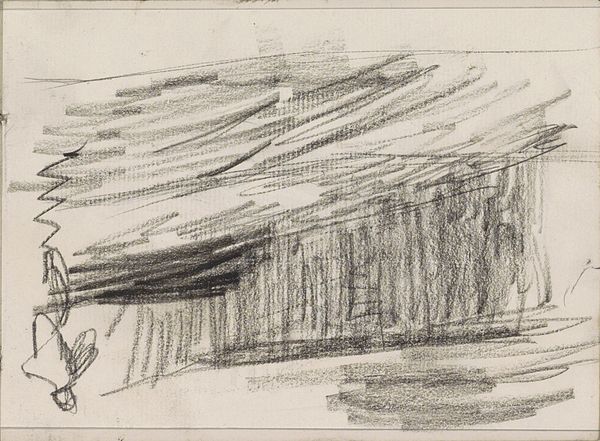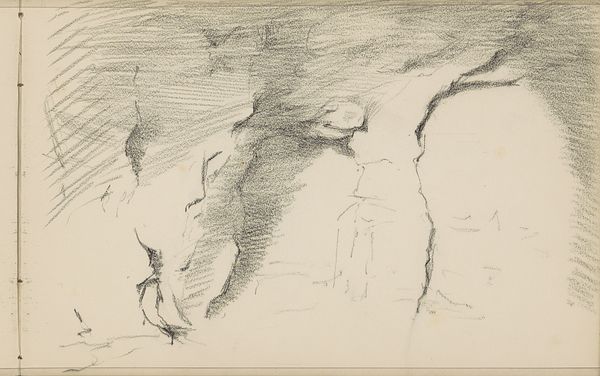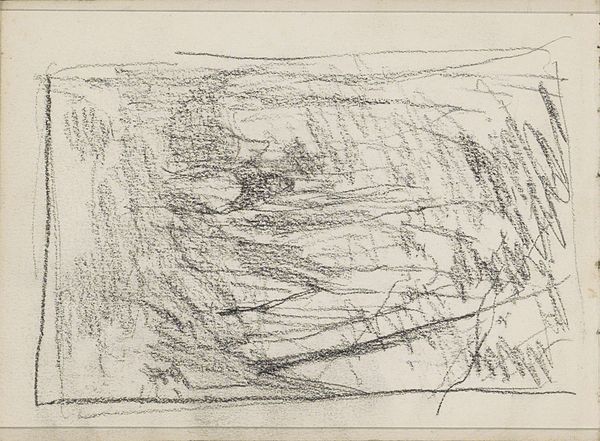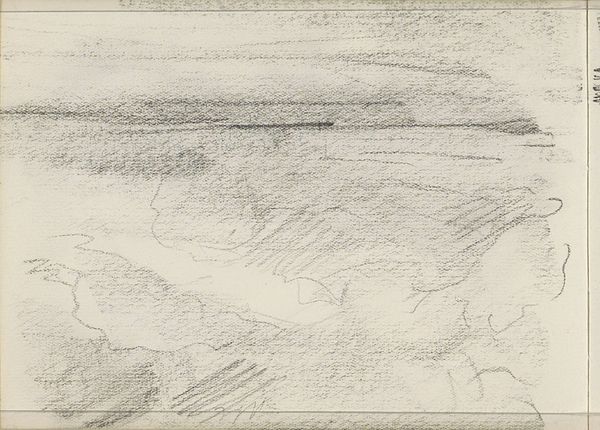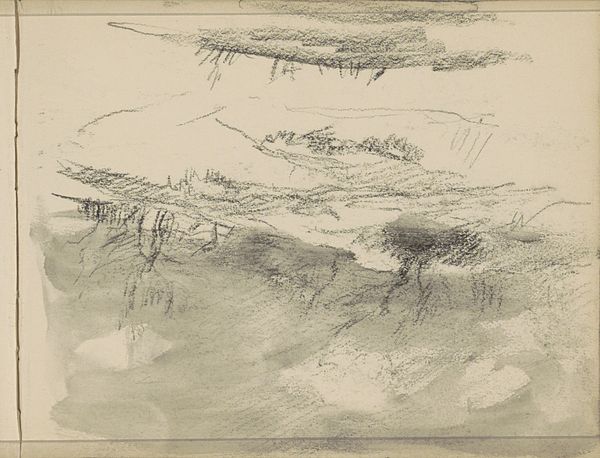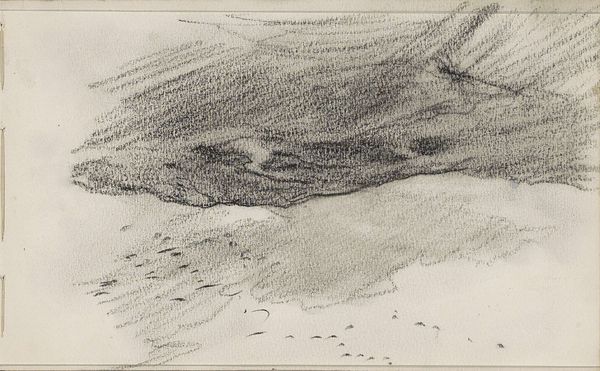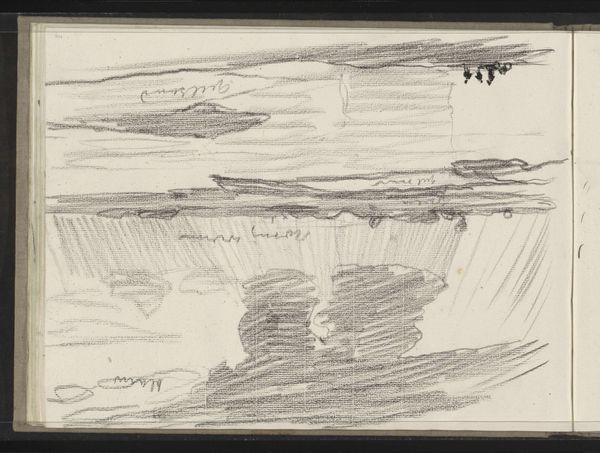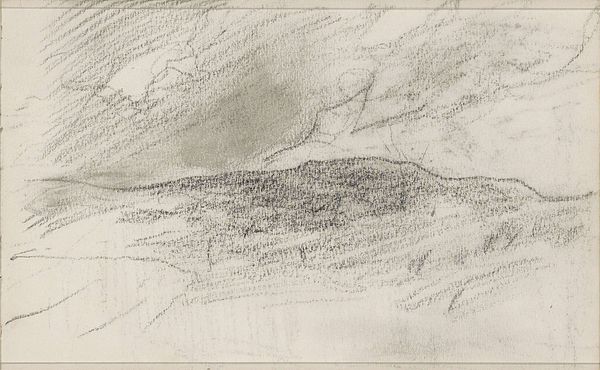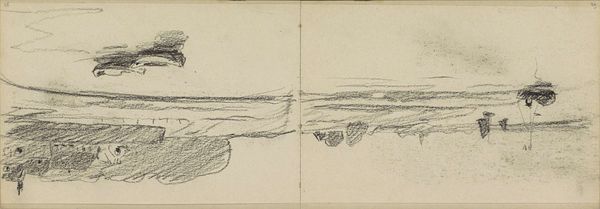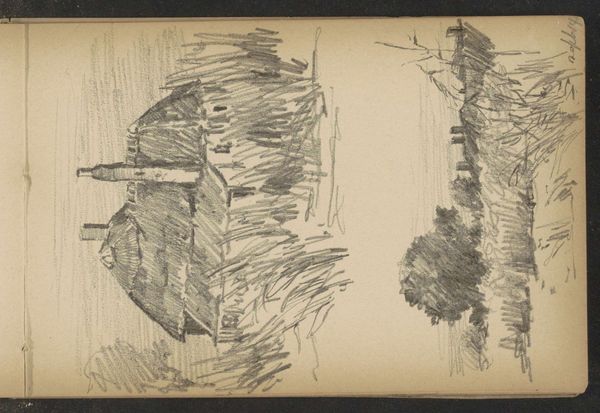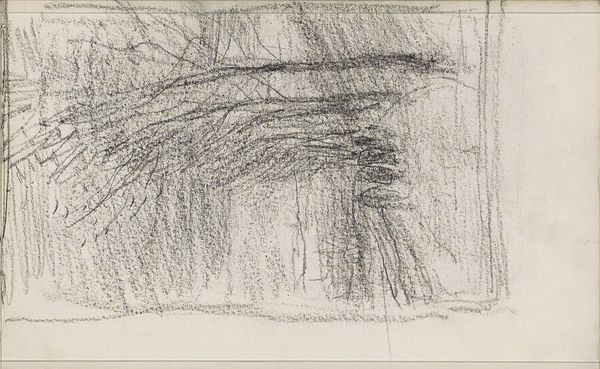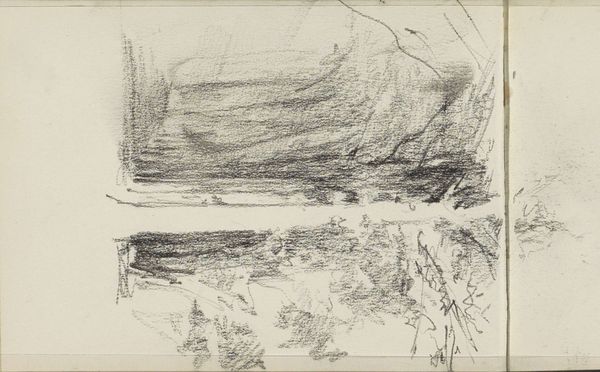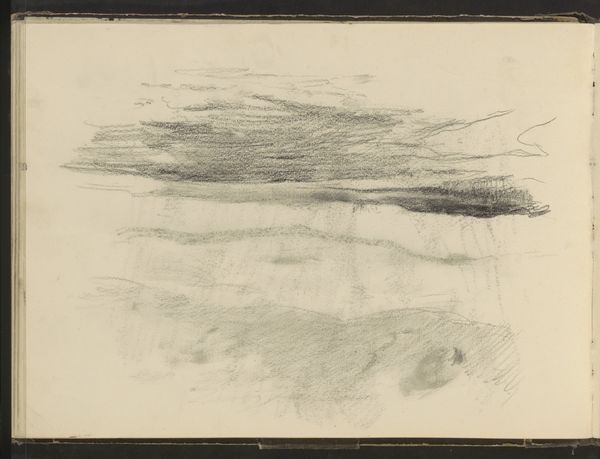
Copyright: Rijks Museum: Open Domain
Curator: Willem Witsen's pencil drawing, "Figuren aan de waterkant bij Wijk bij Duurstede," from around 1906 or 1907, always feels like a captured moment. Editor: It’s immediate, certainly, almost aggressively so with its rapid, dark marks. It's a fleeting impression of a waterside, but I find the frenetic lines somewhat unsettling. Curator: I see it as searching, don't you think? The pencil strokes build a sense of place, that characteristic Dutch light hitting the water… almost as if the artist is trying to grasp a memory before it fades completely. It is in Rijksmuseum after all. Editor: Absolutely, searching is an interesting way to put it! The density of the pencil work itself – think of the graphite used, the layering, the pressure exerted – reveals the labor involved. There’s a physical intensity, a tangible struggle to depict… something. Is it the light, as you suggest, or something more ambiguous? Curator: Perhaps both. Look at the figures suggested near the center—just dashes of darker pencil, yet they root the landscape. The Dutch Golden Age painters were always acutely aware of where humans fit within that landscape. They often dwarfed them. It has the echo of their focus on our position. But there's also a sense of intimacy, of the artist simply being present in the world. It feels profoundly lonely too. Editor: And the production context: pencil, paper, readily available, inexpensive. A medium for study, preliminary sketches, for quickly documenting… it makes the art less about commodity and more about process. How can we disentangle the romantic solitary vision of an artist laboring, from the more mundane reality of labor and material access? Curator: Perhaps that supposed solitary moment on the waterside is always intertwined with those material realities. Witsen lived in interesting times of industrial advancement, so this pencil is the quiet side of that perhaps. Thanks for pulling out that dimension; now when I look at the sketch, I'm reminded not just of Witsen, but of all those involved, even if indirectly, in its making. Editor: And, for me, the experience moves beyond aesthetic appreciation into something more grounded and connected. The romance fades into reality.
Comments
No comments
Be the first to comment and join the conversation on the ultimate creative platform.
